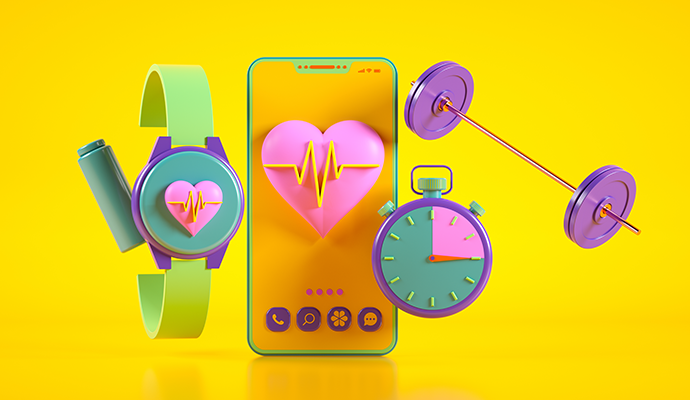-
Table of Contents
“Empowering patients, transforming lives: Remote Patient Monitoring for Chronic Disease Management.”
Remote Patient Monitoring (RPM) is a healthcare technology that enables healthcare providers to monitor and manage patients’ chronic diseases remotely. It involves the use of various devices and sensors to collect and transmit patient data, such as vital signs, symptoms, and medication adherence, to healthcare professionals. This allows for continuous monitoring and timely intervention, leading to improved disease management and better patient outcomes. RPM has gained significant attention in recent years due to its potential to enhance patient care, reduce healthcare costs, and increase access to healthcare services, particularly for individuals with chronic diseases.
The Benefits of Remote Patient Monitoring for Chronic Disease Management
Remote Patient Monitoring for Chronic Disease Management
Chronic diseases, such as diabetes, heart disease, and hypertension, affect millions of people worldwide. These conditions require ongoing management and monitoring to prevent complications and improve patient outcomes. Traditionally, patients with chronic diseases would visit their healthcare providers regularly for check-ups and adjustments to their treatment plans. However, with advancements in technology, remote patient monitoring has emerged as a valuable tool in chronic disease management.
Remote patient monitoring involves the use of technology to collect and transmit patient data to healthcare providers without the need for in-person visits. This data can include vital signs, medication adherence, symptoms, and lifestyle factors. By monitoring patients remotely, healthcare providers can gain valuable insights into their condition and make timely interventions when necessary.
One of the key benefits of remote patient monitoring is improved access to care. For patients living in rural or underserved areas, accessing healthcare services can be challenging. Remote monitoring allows these patients to receive the care they need without the burden of travel. It also reduces the strain on healthcare facilities, as fewer in-person visits are required. This improved access to care can lead to better health outcomes and reduced healthcare costs.
Another benefit of remote patient monitoring is early detection of complications. Chronic diseases often have subtle signs and symptoms that can go unnoticed until they become severe. With remote monitoring, healthcare providers can detect changes in patient data that may indicate a worsening condition. For example, a sudden increase in blood pressure readings for a patient with hypertension could signal the need for medication adjustments or lifestyle modifications. By catching these changes early, healthcare providers can intervene before complications arise, reducing hospitalizations and improving patient quality of life.
Remote patient monitoring also promotes patient engagement and self-management. Patients who actively participate in their own care tend to have better outcomes. With remote monitoring, patients can track their own data and become more aware of how their lifestyle choices impact their health. For example, a patient with diabetes can monitor their blood glucose levels and make adjustments to their diet and exercise routine accordingly. This empowerment can lead to improved self-care and adherence to treatment plans.
Furthermore, remote patient monitoring can enhance care coordination among healthcare providers. With access to real-time patient data, different members of the healthcare team can collaborate more effectively. For example, a primary care physician can review a patient’s blood pressure readings and consult with a cardiologist if necessary. This seamless communication and coordination can lead to more comprehensive and personalized care for patients with chronic diseases.
In conclusion, remote patient monitoring offers numerous benefits for the management of chronic diseases. It improves access to care, enables early detection of complications, promotes patient engagement and self-management, and enhances care coordination. As technology continues to advance, remote monitoring will likely become an integral part of chronic disease management, improving patient outcomes and reducing healthcare costs. By embracing this innovative approach, healthcare providers can revolutionize the way chronic diseases are managed, ultimately improving the lives of millions of patients worldwide.
How Remote Patient Monitoring Enhances Patient Engagement in Chronic Disease Management
Remote Patient Monitoring for Chronic Disease Management
Chronic diseases, such as diabetes, heart disease, and hypertension, require ongoing management and monitoring to ensure optimal health outcomes. Traditionally, patients with chronic diseases would visit their healthcare providers regularly for check-ups and adjustments to their treatment plans. However, with the advancements in technology, remote patient monitoring has emerged as a valuable tool in enhancing patient engagement in chronic disease management.
Remote patient monitoring involves the use of technology to collect and transmit patient data to healthcare providers without the need for in-person visits. This technology allows patients to monitor their vital signs, symptoms, and medication adherence from the comfort of their own homes. By doing so, it empowers patients to take an active role in managing their chronic conditions.
One of the key benefits of remote patient monitoring is that it enhances patient engagement. Patients are more likely to be engaged in their healthcare when they have access to real-time data about their health status. With remote patient monitoring, patients can track their blood glucose levels, blood pressure, heart rate, and other vital signs on a regular basis. This information is then transmitted to their healthcare providers, who can review it and provide timely feedback and recommendations.
Furthermore, remote patient monitoring allows for continuous monitoring of patients’ health status. Instead of relying on periodic check-ups, healthcare providers can have access to real-time data about their patients’ health. This enables them to detect any changes or abnormalities early on and intervene promptly. For example, if a patient’s blood glucose levels are consistently high, their healthcare provider can adjust their medication or treatment plan accordingly. This proactive approach to managing chronic diseases can prevent complications and improve patient outcomes.
In addition to enhancing patient engagement and enabling continuous monitoring, remote patient monitoring also improves patient convenience. Patients no longer have to travel to healthcare facilities for routine check-ups, which can be time-consuming and costly. Instead, they can use devices such as blood glucose monitors, blood pressure cuffs, and wearable fitness trackers to collect their health data at home. This not only saves patients time and money but also reduces the burden on healthcare systems by minimizing unnecessary visits.
Moreover, remote patient monitoring promotes patient self-management. Patients are encouraged to take an active role in managing their chronic conditions by regularly monitoring their health and making lifestyle modifications as needed. For example, a patient with diabetes can track their blood glucose levels and adjust their diet and exercise regimen accordingly. By empowering patients to make informed decisions about their health, remote patient monitoring fosters a sense of ownership and responsibility for their well-being.
In conclusion, remote patient monitoring is a valuable tool in enhancing patient engagement in chronic disease management. By providing patients with real-time data about their health status, enabling continuous monitoring, improving convenience, and promoting patient self-management, remote patient monitoring empowers patients to take an active role in managing their chronic conditions. As technology continues to advance, remote patient monitoring is likely to become an integral part of chronic disease management, improving patient outcomes and reducing healthcare costs.
Implementing Remote Patient Monitoring: Best Practices and Considerations for Chronic Disease Management
Implementing Remote Patient Monitoring: Best Practices and Considerations for Chronic Disease Management
Remote patient monitoring (RPM) has emerged as a valuable tool in the management of chronic diseases. By allowing healthcare providers to monitor patients’ vital signs and symptoms remotely, RPM offers numerous benefits, including improved patient outcomes, reduced hospitalizations, and increased patient satisfaction. However, implementing RPM requires careful planning and consideration of various factors. In this article, we will explore the best practices and considerations for implementing RPM in chronic disease management.
First and foremost, it is crucial to select the right technology for remote patient monitoring. There are various devices and platforms available, each with its own features and capabilities. Healthcare providers must carefully evaluate their specific needs and choose a solution that aligns with their goals and objectives. Factors to consider include ease of use, compatibility with existing systems, data security measures, and scalability.
Once the technology is selected, healthcare providers must establish clear guidelines and protocols for remote patient monitoring. This includes defining which patients are suitable for RPM, determining the frequency and duration of monitoring, and establishing thresholds for intervention. It is essential to involve all relevant stakeholders, including physicians, nurses, and patients, in the development of these guidelines to ensure their effectiveness and adherence.
Furthermore, healthcare providers must ensure that patients receive proper education and training on using the remote monitoring devices. Patients should understand how to measure and transmit their vital signs accurately, as well as how to interpret the data provided by the devices. Clear instructions and ongoing support should be provided to address any questions or concerns that may arise.
Data management is another critical aspect of implementing RPM. Healthcare providers must have a robust system in place to collect, store, and analyze the data generated by remote monitoring devices. This includes ensuring data privacy and security, as well as integrating the data into electronic health records (EHRs) for seamless access and collaboration among healthcare professionals. Advanced analytics tools can also be utilized to identify trends and patterns in the data, enabling proactive interventions and personalized care plans.
Collaboration and communication among healthcare providers and patients are essential for successful RPM implementation. Regular feedback and discussions should take place to review the collected data, adjust treatment plans if necessary, and address any concerns or challenges. Telehealth visits can be scheduled to provide a more comprehensive assessment of patients’ health status and to foster a strong patient-provider relationship.
In addition to these best practices, healthcare providers must also consider the financial implications of implementing RPM. While the initial investment may be significant, the long-term cost savings and improved patient outcomes make it a worthwhile investment. It is essential to explore reimbursement options and incentives provided by insurance companies and government programs to offset the costs associated with RPM implementation.
Lastly, continuous evaluation and improvement are crucial for the success of RPM in chronic disease management. Healthcare providers should regularly assess the effectiveness of the program, gather feedback from patients and staff, and make necessary adjustments to optimize outcomes. This may involve refining protocols, updating technology, or providing additional training to healthcare professionals.
In conclusion, implementing remote patient monitoring in chronic disease management requires careful planning and consideration of various factors. By selecting the right technology, establishing clear guidelines, providing patient education, managing data effectively, fostering collaboration, considering financial implications, and continuously evaluating and improving the program, healthcare providers can harness the full potential of RPM to enhance patient care and outcomes. With the right approach, RPM can revolutionize chronic disease management and pave the way for a more patient-centered and efficient healthcare system.
Conclusion
In conclusion, Remote Patient Monitoring (RPM) has emerged as a valuable tool for managing chronic diseases. It allows healthcare providers to remotely monitor patients’ vital signs, symptoms, and medication adherence, enabling early detection of complications and timely interventions. RPM has shown promising results in improving patient outcomes, reducing hospitalizations, and enhancing patient satisfaction. As technology continues to advance, RPM is expected to play an increasingly significant role in chronic disease management, providing personalized and proactive care to patients in the comfort of their own homes.





